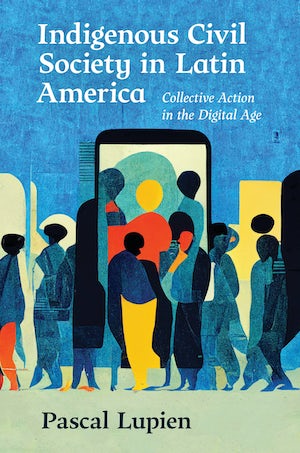Pascal Lupien was about to wrap up a three-year, Social Sciences and Humanities Research Council-funded project on Indigenous activists’ use of digital media in Ecuador, Chile and Bolivia when a wave of large-scale protests broke out in 2019.
The Assistant Professor in the Department of Political Science, along with a team of local and Indigenous research assistants, seized the opportunity to see how the uprisings, which rivalled in scale historic decolonization protests in the 1990s and early 2000s, might fit in with findings on how Indigenous groups were using new technologies, existing technologies and the structures and foundations of their civil society to assert land rights and political autonomy.
The last-minute extension of the research program helped inform Lupien’s latest book, Indigenous Civil Society in Latin America: Collective Action in the Digital Age, published by the University of North Carolina Press this week.

Indigenous Civil Society in Latin America: Collective Action in the Digital Age was published by the University of North Carolina Press.
“In the 1990s and early 2000s, Indigenous civil society in these countries really managed to have a significant impact on policy and legislation, even some constitutional reform,” says Lupien. “In the years after that, there was a lot still going on, but instead of visible, disruptive types of protest movements, the organizations and leaders were involved in the policy process and putting pressure on the government by building on the experience and the concessions gained in the previous period.”
Lupien, who looked at participatory democracy in some of the same communities for his 2018 book, Citizens’ Power in Latin America: Theory and Practice, became curious about how the digital age was coming into play through the 2010s.
“Because so much of the attention to Indigenous social movements in Latin America focused on that late 20th-century and very early 21st-century period, we didn’t know a whole lot about the impact of digital technologies and particularly social media,” he says. “But a lot of the literature tells us that protest and collective action is increasingly moving online.”
However, the notion that social media could be an ideal site for resistance did not necessarily line up with what Lupien and his team observed in the communities they were engaged with.
As the broad general optimism around the potential of social media for marginalized groups began to fade, the researchers were already finding that governments and corporations could limit the effectiveness of what some had believed might be a field-levelling technology.
“We found that social media is not particularly helpful for Indigenous organizations, and that it can and is often used against them,” Lupien says. “Most of the Indigenous organizations don’t have the resources to hire the kinds of specialists that extractive industry companies or the government can, or spend a lot of money to circulate misinformation all day.”
In fact, as Lupien outlines in the book, the reliance of Indigenous civil societies on the complex and robust mechanisms already in place in their communities — rather than on an ever-shifting landscape of digital technologies — is likely beneficial.
“Indigenous civil society has so many complex, structured and very deliberate elements — social movement organizations that engage in protests, co-ops that sell products in order to raise revenue to fund engagement in politics, service-providing organizations offering services that the state fails to provide and other Indigenous participatory democracy governance mechanisms,” says Lupien. “In the book, I argue that the fact that Indigenous civil society doesn’t really have to rely on social media or new technologies is actually a strength. They can and do use it, but their success in advancing their goals doesn’t rely on it.”
To learn more about Lupien’s new book, visit the University of North Carolina Press website.
